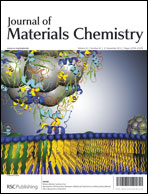The stability of reduced cerium oxide in ambient conditions is clearly demonstrated in this paper. Well-defined, crystalline, cerium oxide nanodots (predominantly Ce4+ or Ce3+ material could be selectively prepared) were defined at silicon substrate surfaces by a method of block copolymer templating. Here, selective addition of the cerium ion into one block via solvent inclusion and subsequent UV/ozone processing resulted in the formation of well-separated, size mono-dispersed, oxide nanodots having a hexagonal arrangement mimicking that of the polymer nanopattern. The size of the dots could be varied in a facile manner by controlling the metal ion content. Synthesis and processing conditions could be varied to create nanodots which have a Ce2O3 type composition. The stability of the sesquioxide type structure under processing (synthesis) conditions and calcination was explored. Surprisingly, the sesquioxide type structure appears to be reasonably stable in ambient conditions with little evidence for extensive oxidation until heating to temperatures above ambient. Room temperature fluorescence is supposed to originate from a distribution of surface or defect states and depends on preparation conditions.

You have access to this article
 Please wait while we load your content...
Something went wrong. Try again?
Please wait while we load your content...
Something went wrong. Try again?


 Please wait while we load your content...
Please wait while we load your content...